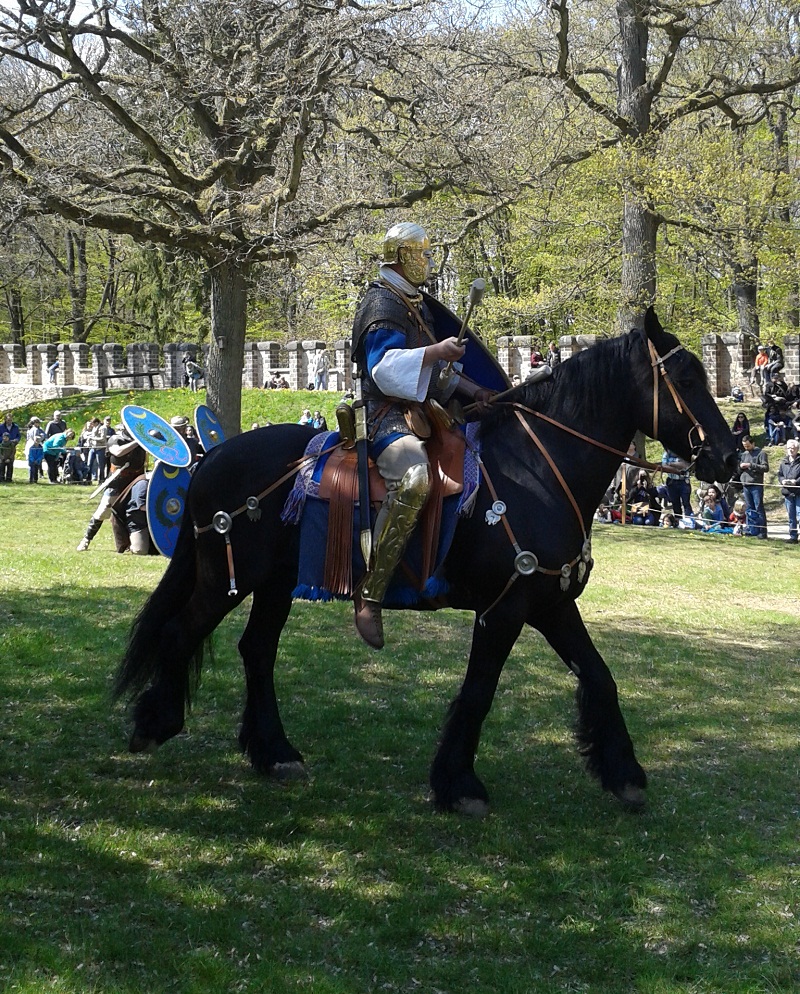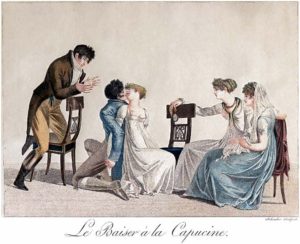The winners of my Birthday celebration post are:
- Cindy G
- Susan B
- Gaynor
- SaraLC
- Megan F
I’ve emailed each of you so please respond so I can get your winnings to you!
Thanks for celebrating with me.
The winners of my Birthday celebration post are:
I’ve emailed each of you so please respond so I can get your winnings to you!
Thanks for celebrating with me.
Note: A version of this was originally posted at my website. This post is expanded to include more about Stewards.
It will be sufficient fbr our purpose, to define the needful qualifications, of each, of three orders of stewardship, namely, of The Superintendant OR COMPTROILING AGENT, THE LAND-STEWARD OR Agent, properly so called, and of The HouseSteward. A thorough knowledge of common accounts, and of the nature of markets, bargaining, and of the proper modes of settlement with tradesmen, will, with the aid of common honesty and discretion, suffice to form the HouseSteward.
But with regard to the first description, or the Chief Agent, the trust is of a high and extraornary nature, nor do the opportunities of tilling such an office to advantage, frequently occur. It is even matter of great public concernment, since the well or ill-management of extensive estates may in a variety of views be highly interesting to the community’. How much then does it concern our great landholders and proprietors, both on their own private, and the public account, to search out the most capable men for this important department.
To be properly qualified for chief agent to a great estate, a man should have attained that thorough knowledge of the business of life, that tried experience in men and things[…]
Let the steward provide a Journal, or Day-book, and a Ledger, with two other books, having an alphabet, and the pages marked, to be styled the Memorandum Ledger, and the General Inventory, and let him always go provided With a POCKET-MEMORANDUM book.
Sidebar: I am using that pocket-memorandum in a novella I’m writing.
Here is a list of things logged by a Steward
Paid for bread and flour
Paid for a Cheshire cheese, 511b. at £3id.
Paid for oats, eight quarters, at 10*.
Paid grocer, for candles, &c …
Paid for a hunting saddle for Your .
Paid for ditto for My
Paid for a new set of harness for six cart-horses
Paid ironmonger, for tnxes, &c
Paid coachmaker, for chariot
Paid for a set of harness for six horses
Paid brazier, for a washing copper, wt.52lb. at £6d.
Paid for a garden engine
Paid for a garden roll six feet, at 2s. 6d.
Paid cooper, for six iron-bound hogsheads, at 22s
Paid Your——— by cash, bills, &c
Paid butcher’s bill
Paid for a cask of vinegar 16 gallons,at 16i
Paid for 20 ton of coals, at 10s
Paid for carriage of ditto
Paid housekeeper her bill for incidents
Paid myself my year’s wages
Paid housekeeper her year’s wages ….
Paid the keeper his year’s wages
Paid the butler ditto
Paid the head footman his year’s wages
Paid the under footman ditto
Paid huntsman ditto
Paid the dog-boy ditto
Paid the principal gardener ditto
Paid the under gardener ditto
Patd the head groom ditto
Paid the under groom ditto
Paid the coachman ditto
Paid the postillion dilto
Paid the game-keeper ditto
Paid labourers wages
There are several entries like this:
Paid collector, for two quarterly payments of the land-tax, from Lady-day to Michaelmas, 17—, for the manor of A. as appears by his receipt.
The total amount of land taxes paid is £499.11.5
Total yearly expenses for this particular Lord —- are £6139.2.41
The ledger example is for recording income received and money spent for tenant and household-related expenses.
This line is what made me pause, the author has it labeled for the year 1800:
Agreed this day with R. S. to accept as a compensation for a heriot due at the death of his father…………… £26 5
I admit I had to look up “heriot”
her·i·ot
noun
British historical
noun: heriot; plural noun: heriots
- a tribute paid to a lord out of the belongings of a tenant who died, often consisting of a live animal or, originally, military equipment that he had been lent during his lifetime.
Right. Even if this is only a made up example and not drawn from an actual example, (which I think it is since the author says he got examples from his own work and others), it’s not something I’ve run across in any of my previous research in the Regency.
R.S’s father died, and he has to pay Lord Soandso £26 5. Sigh.
Also interesting is that J.B paid half a year’s rent of £79.5 and D.S paid a full year at £125
J.S. Sadler was paid the full amount of his bill £19.10 as was P.A. Smith in the amount of £21.5
The Groom was paid expenses of £4.3.11
I just paged forward, there are several examples, plainly drawn from documents lent to him, that mention heriots:
Received of (J. D. a composition for three heriots, instead of his three best beasts or goods, due at the death of his father E. D
There are many of them.
Trees were branded, and boy, they were quite profitable.
When an account of the timbers is taken, they may be marked with iron stamps, the rough part of the bark being taken off with the hatchet before the stamp is applied, that the impression may be made fair; and that it may be lasting, the stamp should go no deeper than the bark, but it may be renewed.
Then I came to a long rant about lazy poor people and how taking away the commons and giving them to “ingenious gentlemen” to rent back to the poors who would then be no longer lazy, and, well, I’ve had about enough of that kind of talk lately so I stopped reading.
Two weeks ago, I paid another visit to my favorite reconstructed Roman fort—but this time, I was not alone, oh no! I was accompanied by my Roman rubber duckie, who felt straight at home in front of the porta praetoria, the main gate…

…and between the Emperor Augustus‘ feet…
But I didn’t visit the fort just for a photo shoot with the Roman rubber duckie, no, it was market day at the Saalburg, and at various stalls spread across the whole museum you could learn about antique crafts such as pottery (did you know boiling earthenware in milk will seal off the pores and make it waterproof?), spinning, glass making, and bone carving. I was quite surprised to learn that objects made from bone can be dyed, e.g., with onion skins or even green rust, which produces a lovely turquoise color.
There was also a stall with Roman cosmetics on display. Apart from a lead foundation (to make your face look all nice and pale) (it might get paralyzed a little, mind you, so perhaps you might want to use chalk powder instead, even though it doesn’t look as pretty as the lead), Roman ladies also used eyeshadow (the more colorful the better), rouge, and eyeliner.
Most make-up was available as a powder. A bit of powder would be mixed with a bit of oil and then applied to the face.
One of the highlights of the Roman market was definitely the military demonstration: a small group of auxiliary soldiers went through a number of exercises, while their (rather dashing) optio watched on with eagle-eyes. 🙂

A Roman horseman going through a few simple weapons‘ exercises formed the crowning glory of that demonstration. He was in full regalia, including a silver mask, which the Roman cavalry wore on special occasions, e.g. for cavalry games.

All in all, it was another delightful trip into the Roman past!
My ongoing research into free blacks in Georgian London has netted me two more books. I’m going to talk about the first today: Colonel Despard: The Life and Times of an Anglo-Irish Rebel by Clifford D. Conner. All I knew going in was that Despard had a black wife. I was hoping to find out about how their relationship was viewed and how it affected his career as an officer, but the book focuses vary narrowly on his military career and his trial for rebellion.
There were tiny bits about his personal life that could be gleaned though. His wife, Catharine, was the daughter of an English curate in Jamaica (no information is provided as to whether her parents were married). She was clearly well-educated, and obviously moved in the same circles as the English officers and their wives. Despard married her in the middle of his career (probably in 1785), and promotions continued to follow, so the powers that be in the army didn’t seem to care. Neither did Nelson, who was a friend and testified in Despard’s defense. Catharine traveled with him to his various postings, and appears to have acted as his hostess when he was governing various territories in the West Indies.
Despard’s family on the other hand clearly never accepted the marriage. They referred to Catharine as Despard’s “black housekeeper” and after Despard’s death they offered no assistance to her or to their son (his uncle, General Despard, said that James had “not even an illegitimate claim upon him.”) What we do know is that Despard’s friends took care of them after Despard was executed (they were reportedly given a pension by Sir Francis Burdett and Lord Cloncurry’s memoirs state that they lived with his family in Lyon for some years).
Their son, James Despard, went on to join the military (as an officer, which I think is worth noting). There are various reports of him (usually referred to as a “creole”) that scatter across the first decades of the nineteenth century. He was appointed a captain the London Milita in 1814 after serving in France and supposedly refusing an offer of a high position from Bonaparte (this I find doubtful given Bonaparte’s treatment of the Chevalier Saint-Georges). There are further anecdotes from his spiteful Aunt Jane suggesting that he ran away with an heiress.
So all in all, I read a lot of tedious military history and found the barest scraps of what I was interested in, but I’ll take what I can get when it comes to real life interracial marriages in the period.
It did lead me however to a post by Mike Jay who has also written a book about Despard (The Unfortunate Colonel Despard) that has a more detailed look at the marriage and Catharine. Let me quote it here:
According to Jay, this could well be the first known case of an English gentleman married to a free woman of color, which makes it all the more fascinating.
I’m in the middle of teaching an online class, “Introduction to Writing Regency Romance.” Preparing for the class helped me brush up on the basics and the participants seem to be enjoying it. I certainly am. It feels rather nostalgic to answer questions I asked about seventeen years ago when I started my first manuscript!
One thing I’m keeping in mind while teaching this class is that there are many types of Regency romance—traditional, inspirational, long historical, paranormal, erotic, and other variations. There are also many different readers—some who love specific genres, some who are more eclectic in their reading, some who prefer “sweet” romance, some who enjoy darker stories, etc… Even though the historical background is unchanging, I believe that readers have different ideas of what sort of Regency world they most want to visit and since romance is meant to be entertaining, there really is no right or wrong Regency world, only personal preferences. So in each lesson, I strive to provide accurate information, but also allow each participant to decide for herself how much she wants to use that information in her stories.
 Within my books, I do strive to get the details right. My characters may bend the rules of society, but not without being aware of the risks they take. But I’m not a purist about every matter. I know perfectly well that the hero’s clothing on the cover of Fly with a Rogue is inaccurate. However, I chose this image for a specific reason. I’ve found that readers don’t always check my blurbs to gauge the sensuality of my books, so I used this image to help them recognize that this is one of my sexier books. So far, no one has complained about the sensuality, and no one has complained about the inaccurate clothing either. I think I’ve achieved my goal of making sure the right readers buy this story.
Within my books, I do strive to get the details right. My characters may bend the rules of society, but not without being aware of the risks they take. But I’m not a purist about every matter. I know perfectly well that the hero’s clothing on the cover of Fly with a Rogue is inaccurate. However, I chose this image for a specific reason. I’ve found that readers don’t always check my blurbs to gauge the sensuality of my books, so I used this image to help them recognize that this is one of my sexier books. So far, no one has complained about the sensuality, and no one has complained about the inaccurate clothing either. I think I’ve achieved my goal of making sure the right readers buy this story.
As a reader, I’m pretty eclectic. I’m OK with books that create rather different versions of the Regency. For instance, I don’t care if some of the details are over the top in a really funny story. In an angsty story, I want more realism. I try to be a forgiving reader regarding a lot of historical details, though there are a few that grate.
As someone who’s done a bit of riding, I find that errors regarding horses do bother me. The funniest one was the story in which the hero kept teams of black stallions posted at inns between London and his country home. I’m sure this seemed romantic to some, but anyone who knows much about horses would know just how unrealistic this would be. (Most male horses are gelded as this makes them easier to manage; generally only the ones deemed best for breeding are kept intact.)
 The sort of things that bother me most, though, are those that paint a Regency society that is too different from what I imagine from my reading and research. These include books in which the characters behave as if they are completely unaware of social conventions—not merely rebellious, but unaware. These also include books in which the social conventions are stricter and feel more stuffy and Victorian than Regency. I’ve read books in which characters are declared “compromised” after a brief time alone, even though there are plenty of scenes in Jane Austen’s books where couples are not closely chaperoned. There might be gossip, such as there is when Marianne is out driving with Willoughby, but not the full-flown scandal of, say, Lydia running off with Wickham.
The sort of things that bother me most, though, are those that paint a Regency society that is too different from what I imagine from my reading and research. These include books in which the characters behave as if they are completely unaware of social conventions—not merely rebellious, but unaware. These also include books in which the social conventions are stricter and feel more stuffy and Victorian than Regency. I’ve read books in which characters are declared “compromised” after a brief time alone, even though there are plenty of scenes in Jane Austen’s books where couples are not closely chaperoned. There might be gossip, such as there is when Marianne is out driving with Willoughby, but not the full-flown scandal of, say, Lydia running off with Wickham.
Anyway, I’m curious what others think. What’s your favorite kind of Regency world? Without naming authors, because this is a polite space, are there any pet peeves you’d like to share?
 Also, the ebook version of The Incorrigible Lady Catherine is on sale this week for just 99 cents. Lady Catherine is one of my more rebellious heroines. Besides trying to elope with a rake, she shocks her family by playing Beethoven sonatas, which were considered too passionate for ladies. Since she derives so much pleasure and comfort from the arts, I’m going to donate the proceeds to PBS.
Also, the ebook version of The Incorrigible Lady Catherine is on sale this week for just 99 cents. Lady Catherine is one of my more rebellious heroines. Besides trying to elope with a rake, she shocks her family by playing Beethoven sonatas, which were considered too passionate for ladies. Since she derives so much pleasure and comfort from the arts, I’m going to donate the proceeds to PBS.
You can get The Incorrigible Lady Catherine for Kindle, Nook, Apple, and Kobo.
Elena
